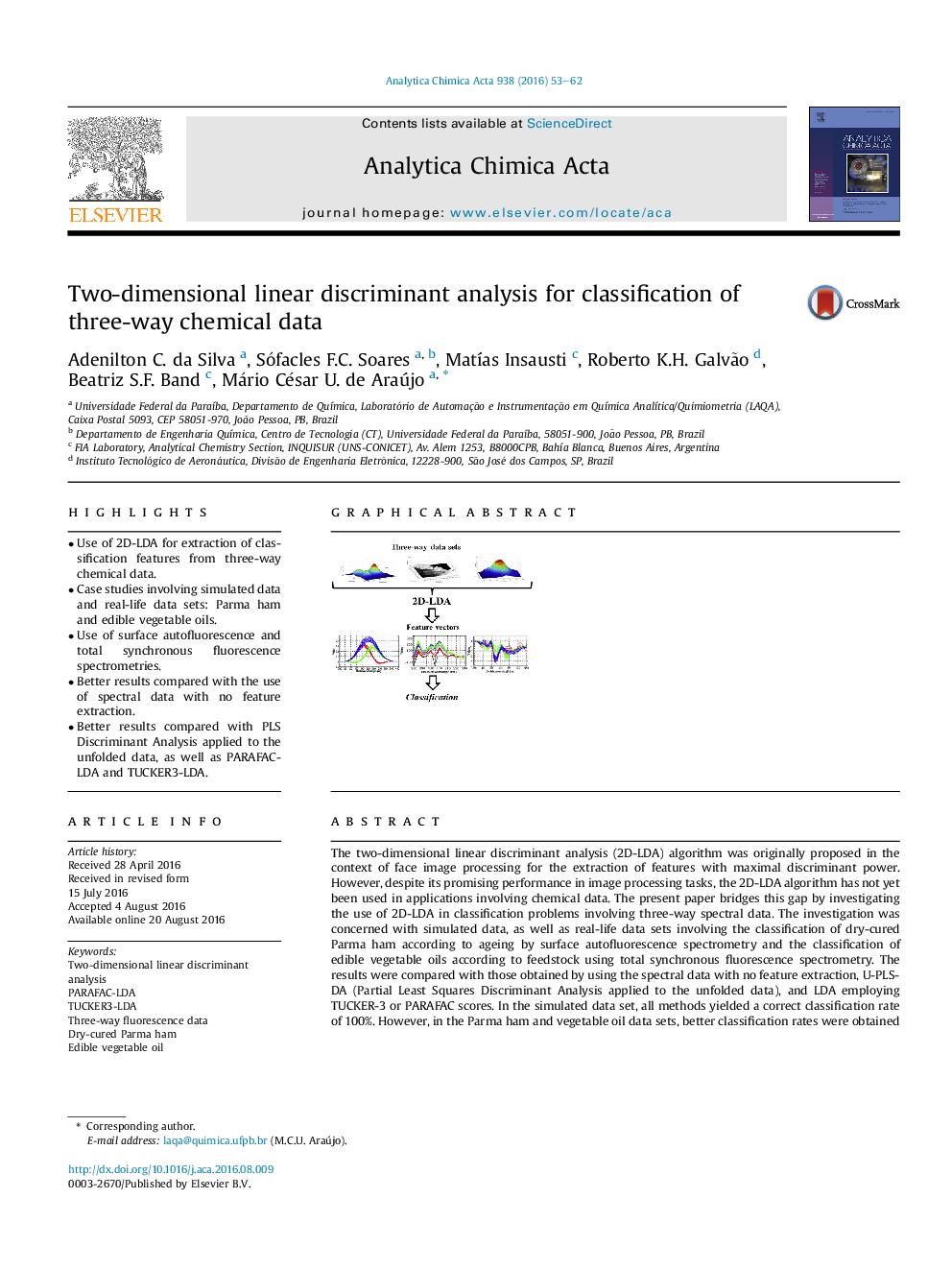| کد مقاله | کد نشریه | سال انتشار | مقاله انگلیسی | نسخه تمام متن |
|---|---|---|---|---|
| 5131394 | 1490894 | 2016 | 10 صفحه PDF | دانلود رایگان |
- Use of 2D-LDA for extraction of classification features from three-way chemical data.
- Case studies involving simulated data and real-life data sets: Parma ham and edible vegetable oils.
- Use of surface autofluorescence and total synchronous fluorescence spectrometries.
- Better results compared with the use of spectral data with no feature extraction.
- Better results compared with PLS Discriminant Analysis applied to the unfolded data, as well as PARAFAC-LDA and TUCKER3-LDA.
The two-dimensional linear discriminant analysis (2D-LDA) algorithm was originally proposed in the context of face image processing for the extraction of features with maximal discriminant power. However, despite its promising performance in image processing tasks, the 2D-LDA algorithm has not yet been used in applications involving chemical data. The present paper bridges this gap by investigating the use of 2D-LDA in classification problems involving three-way spectral data. The investigation was concerned with simulated data, as well as real-life data sets involving the classification of dry-cured Parma ham according to ageing by surface autofluorescence spectrometry and the classification of edible vegetable oils according to feedstock using total synchronous fluorescence spectrometry. The results were compared with those obtained by using the spectral data with no feature extraction, U-PLS-DA (Partial Least Squares Discriminant Analysis applied to the unfolded data), and LDA employing TUCKER-3 or PARAFAC scores. In the simulated data set, all methods yielded a correct classification rate of 100%. However, in the Parma ham and vegetable oil data sets, better classification rates were obtained by using 2D-LDA (86% and 100%), compared with no feature extraction (76% and 77%), U-PLS-DA (81% and 92%), PARAFAC-LDA (76% and 86%) and TUCKER3-LDA (86% and 93%).
Journal: Analytica Chimica Acta - Volume 938, 28 September 2016, Pages 53-62
